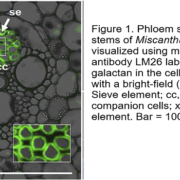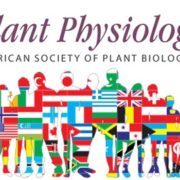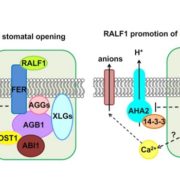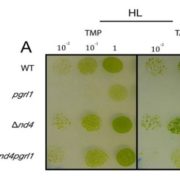
Brassinosteroids and Hydrotropism
Plant Physiology, Plant Physiology: On The InsideSoil water availability is a major constraint for crop growth throughout the world. Hydrotropism, the bending of roots in response to moisture gradients, enables plants to take better advantage of available soil water. In contrast to gravitropism and phototropism which have been studied extensively,…

Mycorrhiza-Triggered Networks in Leaves
Plant Physiology, Plant Physiology: On The InsideOne effect of mycorrhizal fungi is to stimulate the plant immune system, leading to induced systemic resistance (ISR). Thus, mycorrhizal fungi influence the interactions between plants and aboveground herbivores. The molecular mechanisms underlying these types of beneficial microbe-plant interactions…

Coordinating Cell Walls and Cell Growth: A Role for LRX Extensin Chimeras
Blog, Plant Physiology, Plant Physiology: News and ViewsTo regulate the addition of cell wall components as cells expand and to control changes in cell wall composition as cells differentiate, there must be a feedback system that senses the state of the cell wall and transmits this information. The mechanisms underlying cell wall-intracellular signaling remain…

A Novel Role of Ring Chromosomes as Evolutionary Drivers of Herbicide Resistance
Plant Physiology, Plant Physiology: News and ViewsIn eukaryotes, chromosomes are linear structures; in contrast, a ring-shaped chromosome is a rare structure that results from the fusion of broken ends of linear chromosomes. Ring chromosomes may be induced by radiation or may occur spontaneously. In humans, ring chromosomes occur in approximately 1:50,000…

Sugar Coating the Phloem Sieve Element Wall
Blog, Plant Physiology, Plant Physiology: News and ViewsWhereas fluorescent tagging of proteins has dramatically advanced the study of protein function in cell biology, similar approaches with walls have been difficult due to the few methods available to visualize polysaccharides and monitor their dynamic modifications. What has become increasingly clear…

Plant Physiology Launches Assistant Features Editors
Plant Physiology, Plant Physiology: EditorialsBy Michael R. Blatt and Mary Williams
NEW (July 31, 2019): Information about applying to the 2020 Plant Physiology Assistant Features Editor program can be found here. Applications due by September 30, 2019. See below for more information on the AFE program.
Published March 2018.…

FERONIA-RALF and G Proteins in Guard Cell Response
Plant Physiology, Plant Physiology: On The Inside, Research, Research BlogHeterotrimeric guanine nucleotide-binding (G) proteins are composed of Ga, Gb, and Gg subunits and function as molecular switches in signal transduction. In Arabidopsis, there is one canonical Ga (GPA1), three extra-large Ga (XLG1, XLG2, and XLG3), one Gb (AGB1), and three Gg (AGG1 to 3) subunits. Despite…

Mitochondria Affect Photosynthetic Electron Transport
Plant Physiology, Plant Physiology: On The Inside, Research, Research BlogPhotosynthetic eukaryotic organisms rely on two organelles, chloroplasts and mitochondria, for the synthesis of the molecules NAD(P)H and ATP that fuel their metabolism. These two organelles are commonly thought of as two separate entities but the results of Larosa et al. (10.1104/pp.17.01249) suggest…

Herbicide Resistance in Common Waterhemp
Plant Physiology, Plant Physiology: On The Inside, Research, Research BlogThe herbicide glyphosate is widely used in agriculture, especially on glyphosate-resistant (GR) transgenic crops. The widespread adoption of GR crops across the globe and an overreliance on glyphosate as a single means of weed control has spawned many GR weed species. Glyphosate inhibits the 5-enopyruvlyshikimate-3-phosphate…

